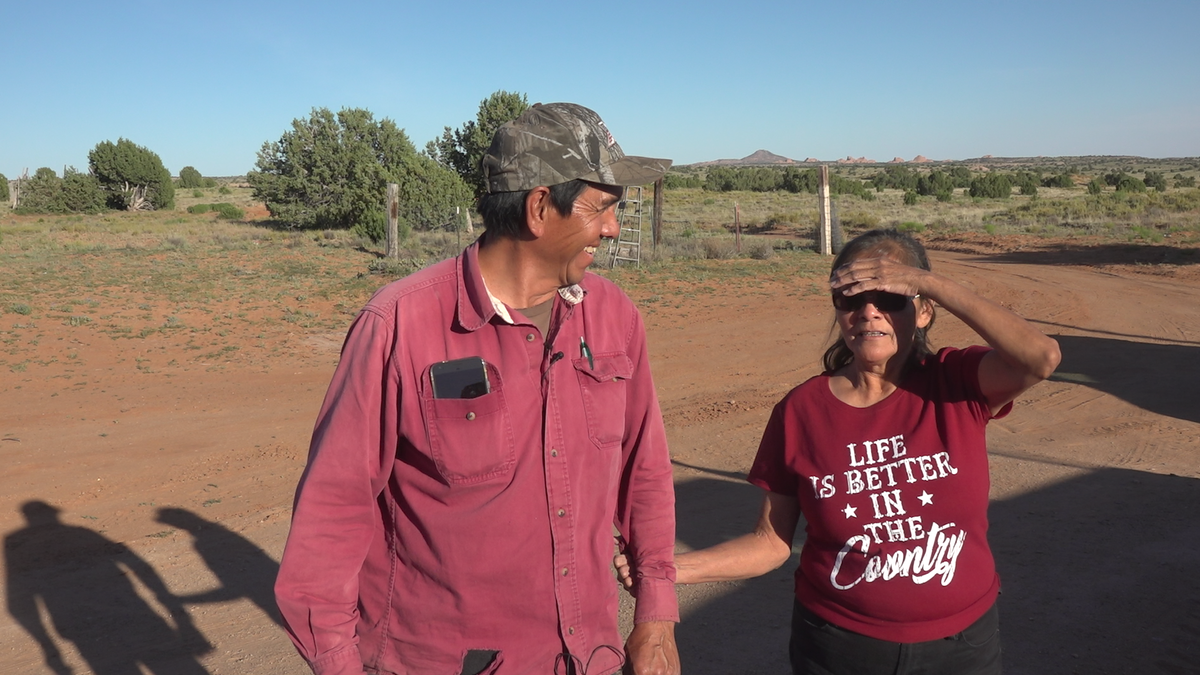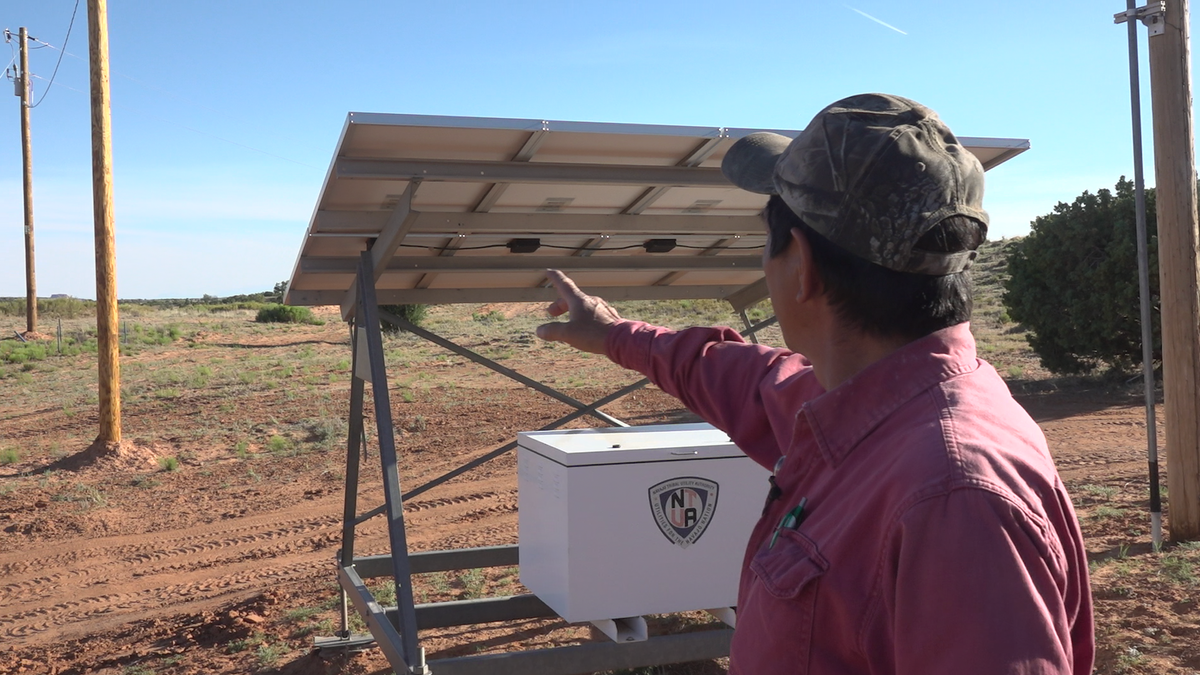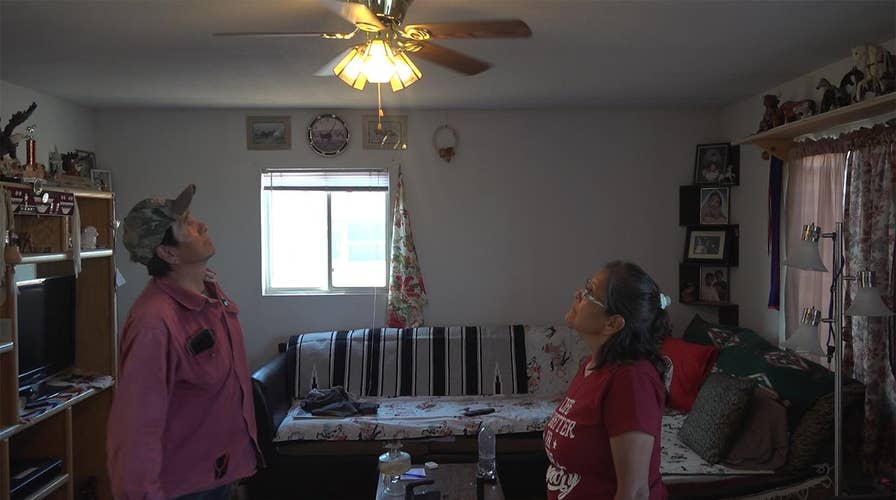Volunteers installed electricity at Native Americans’ homes
138 power line volunteers from 12 states partner to install electricity at 233 families’ homes.
TONALEA, Ariz. – The Littlefoot family didn’t have electricity for 17 years. They lived off of low-powered generators and used flashlights and kerosene lamps when it got dark.
“Seventeen years without electricity, so it's been hard…some of the appliances that we have, we can’t run it,” Ernest Littlefoot, Sr. said.
The family is one of 15,000 Navajo families who for centuries have been living in darkness. A large part of the Navajo Nation – the largest Native American territory in the country – has never done basic things like flipped a light switch or used an oven.
But now there is a major effort to power up Native American lands that never had an electrical grid or adequate solar energy.

The Littlefoot family was one of 15,000 Navajo families who lived without electricity. They didn’t have electricity for 17 years. (Fox News)
“The idea that there are these wonderful citizens of the United States without power is just mind boggling,” said Michael Hyland, American Public Power Association senior vice president of engineering services.
The Littlefoot family was able to get electricity for the first time a few weeks ago. While they had some solar power before crews dug up powerlines, it was not enough energy for basic things like storing food in a refrigerator and lighting up the house.
The Navajo Tribal Utility Authority, a non-profit tribe-owned utility company that started in 1959, has been slowly trying to address the lack of power on the Navajo reservation, which is in parts of Arizona, New Mexico and Utah. The authority has been trying to connect tribal homes to power for the first time ever.
Dozens of volunteer power line crews from 28 utility companies throughout 13 states have been traveling to the Native American reservation to help install electricity as part of a pilot project called #LightUpNavajo, which has been raising funds through an online campaign.
The crews were partnered up, sometimes with workers from another state, to tackle the installation of electricity at different homes. In total, from April to May, they built power lines to connect more than 233 families to electricity.

The Littlefoots in front of ther home on the vast Navajo Nation land. (Fox News)
“We used to, when it got dark… we were running around feeling for everything or would turn on…the flashlights or I had a couple of candles here,” Phyllis Littlefoot, Ernest’s wife, said. “Now I'm coming in and I just flip the lights and everything’s going and I just come home from work and then jump into bed, and sometimes I wake up at night. ‘Oh, we have electricity, not solar.’ I see that the nightlight is still on…I don't want to start crying but I'm just so happy.”
Depending on the terrain, it costs an average home $60,000 to $70,000 for a utility line that is around a mile long.
Gaylda Tso is Tuba City’s office supervisor for the Navajo Tribal Utility Authority said it seems like a basic necessity for families, but on the reservation it was common to live without electricity.
JON SUMMERS: ELECTRIC VEHICLES PAVING THE WAY TO BIPARTISANSHIP
“When I heard about the project, I was very excited and I was on board to help all these customers without electricity…The Littlefoot family, they were faced with a high cost, they’re close to a mile from the main power line,” Tso said. “I wish I could’ve reached out to more customers, there’s more customers out there but we did as much as we could for our district.”

Ernest Littlefoot, Sr. shows the newly installed powerline poles near his home as part of the Light Up Navajo Project. (Fox News)
The project came about after conversations Walter Haase, NTUA’s general manager, had with American Public Power Association members at events throughout the country. The APPA already had a mutual aid program that sends electric crews to natural disaster areas – so they decided to partner up and use mutual aid to help out what’s already been a disaster for decades – installing electricity for the first time in Native American families’ homes.
“All of us are Americans and we need to help each other become a better, greater place,” Haase said.
Haase said that in the 1920s and 1930s, when the rural utilities service corporation of the USDA provided money to co-ops, the NUTA didn’t exist and the investor-owned utilities that were supposed to serve areas in the Navajo Nation did not.

Crew from APS setting up power line poles a few miles from the Littlefoot residence (Alysa Landry, American Public Power Association, Navajo Tribal Utility Authority)
“That’s why we're kind of late to the game with providing the services and – because we're late to the game – the dollars and the resources that the federal government made available to the rest of the United States population were not made available to our people,” Haase said.
The Department of Energy is now trying to replicate the effort in states like Alaska, Oklahoma, and other areas that don’t have electricity.
CLICK HERE TO GET THE FOX NEWS APP
Light Up Navajo project officials said they hope to keep providing electricity to families multiple times a year. The only factor getting in their way: money. According to the Navajo Tribal Utility Authority, with 15,000 families (approximately 60,000 people) without power, it costs around $1 billion to light up each home at $40,000 per home, along with hundreds of millions dollars needed for electric transmission and distriubtion stations. So, for each project lighting up around 200 homes, it'd take an estimated $8 million. Their goal right now is fundraising.
“Our prayers, our faith, hopes and dreams have come true,” Phyllis said. “I say, oh a miracle happened. I’m so happy everything is worry free now…Now, I don’t think we have to do anything but just turn on the switch and there is light, it’s like oh, God gave us light.”






















